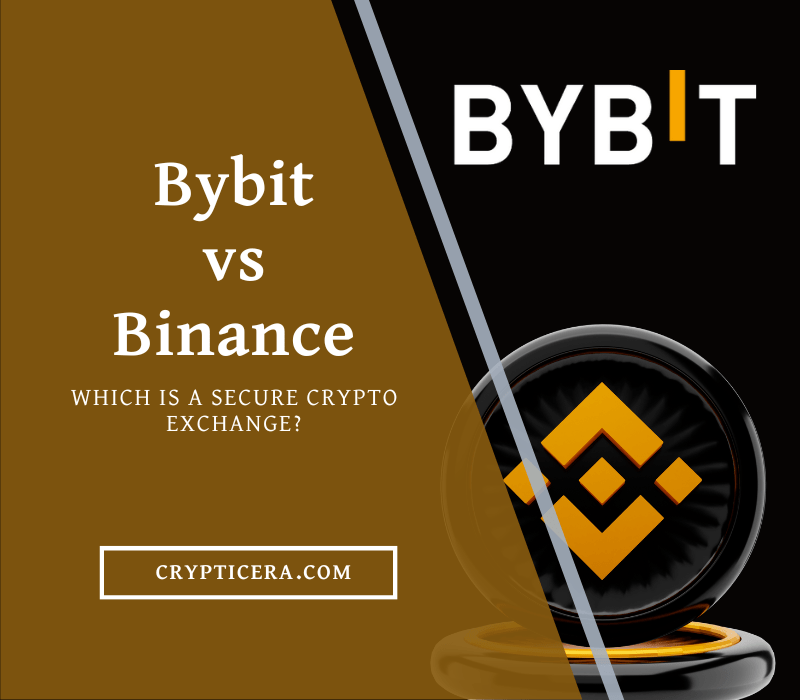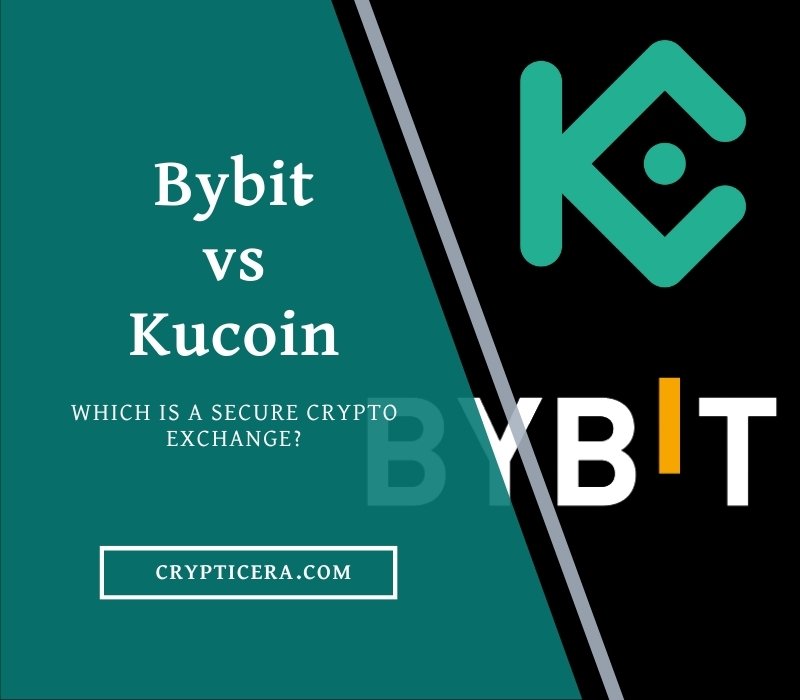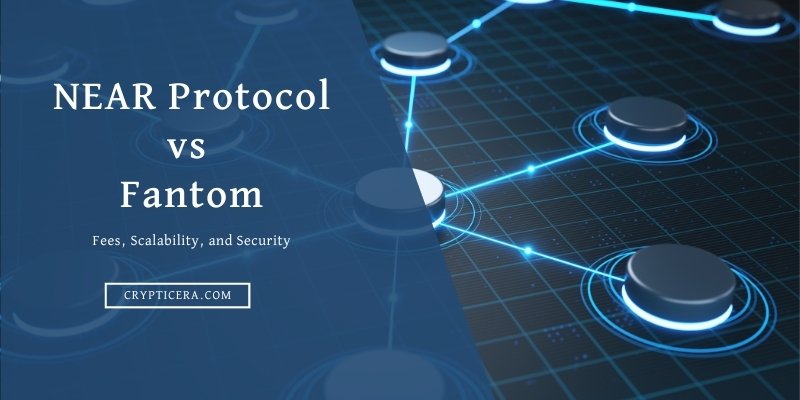Blockchain technology has the potential to revolutionize many different industries and applications. Among the most popular and widely-used blockchain platforms are Ethereum, Cardano, and Polkadot.
In this blog post, we will explore the unique features and capabilities of each of these platforms and discuss their potential uses and benefits.
By the end of this post, you will have a better understanding of these platforms and be able to make an informed decision about which one is Worth Investing in.
Key Takeaways:
- Cardano’s main focus is on security and sustainability, and it uses a proof-of-stake consensus algorithm.
- Polkadot aims to be a sharded multichain network, allowing for interoperability between different blockchains.
- Ethereum is currently the most widely adopted platform for decentralized applications and smart contracts.
- Cardano and Polkadot both have lower transaction fees and faster processing times compared to Ethereum.
Ethereum vs Cardano vs Polkadot: At a Glance
| Platform | Ethereum | Cardano | Polkadot |
|---|---|---|---|
| Launched | 2015 | 2017 | 2020 |
| Consensus Mechanism | Proof-of-Stake (PoS) | Proof-of-Stake (PoS) | Nominated Proof-of-Stake (NPoS) |
| Programming Language | Solidity, Vyper, Bamboo | Haskell | WebAssembly (Wasm) |
| Scalability | Moderate | High | High |
| Interoperability | Limited | Limited | High |
| Security and Privacy | High | High | High |
| Market Cap | $220B | $41B | $12B |
| Use Cases | Smart contracts, dApps, DeFi | Smart contracts, dApps, DeFi | Blockchain interoperability, dApps |
| DApps | Yes | Yes | Yes |
| NFTs | Yes | Yes | Yes |
| Block Time | 15 seconds | 20 seconds | 6 seconds |
| Governance Model | Decentralized | Decentralized | Decentralized |
| Type of Blockchain Network | Public | Public | Public |
| Maximum Supply | Unlimited | 45 billion | 1 million |
| User Base Size and Activity | Large and active | Growing | Growing |
Note: Market cap values are as of December 15, 2022.
What is Ethereum and How does it Work?

Ethereum is a decentralized platform that runs smart contracts on a custom-built blockchain.
These smart contracts are written in a high-level programming language and compiled into EVM code.
The Ethereum blockchain processes transactions in blocks with a maximum size and block time, usually between 15 and 20 seconds.
This means transactions on the Ethereum network are typically confirmed within a few minutes.
Ethereum Virtual Machine (EVM)
The Ethereum Virtual Machine (EVM) is a runtime environment for smart contracts in Ethereum.
It is used to execute code for decentralized applications (dapps) on the Ethereum blockchain.
The EVM makes it possible for dapps to run on a decentralized, peer-to-peer network, rather than on a single computer or server.
This makes dapps more secure and resilient, as they are not controlled by any one entity.
What is Cardano and How does it Work?

Cardano develops a decentralized platform for building and running blockchain-based applications.
Charles Hoskinson, the co-founder of Ethereum, leads a team of engineers and researchers in this project.
Blockchain uses a proof-of-stake (PoS) consensus mechanism, which means network nodes, operated by stakeholders with vested interests in the network, validate transactions and add them to the blockchain.
Cardano’s multi-layer architecture separates the platform into a settlement layer for transactions and a computation layer for running dApps and smart contracts, allowing for scalability, flexibility, and system upgrades without disrupting the entire network.
It also prioritizes security and reliability through the use of zero-knowledge proofs. Ultimately, Cardano aims to provide a scalable, secure, and flexible platform for decentralized applications and smart contracts.
What is Polkadot and How does it Work?

Polkadot designs a decentralized technology platform to enable different blockchain networks to communicate and share data, creating a more connected and efficient ecosystem.
It utilizes a proof-of-stake consensus algorithm, in which users stake their tokens to secure the network and earn rewards.
Polkadot also uses parachains, customizable blockchain networks built on its platform, which can operate independently and interact with other networks.
This allows for flexibility in designing blockchain applications.
Ethereum vs Cardano vs Polkadot: Key Differences
Ethereum, Cardano, and Polkadot are all decentralized, open-source blockchain platforms that can be used to build and run applications.
Each platform has its own unique features and uses cases.
Features
Ethereum is a well-established platform that allows developers to build and run smart contracts and decentralized applications (dApps).
It uses the Solidity programming language and is known for its ability to support a wide range of applications and use cases, including non-fungible tokens (NFTs), stablecoins, and decentralized finance (DeFi) applications.
Cardano is a relatively new platform that uses the Haskell programming language and is designed to be a more scalable and sustainable alternative to Ethereum.
It is focused on providing support for financial applications and has a strong emphasis on security and compliance.
Polkadot is a blockchain platform that aims to provide interoperability between different blockchain networks.
It uses the Substrate framework and allows developers to build and connect their own blockchain networks, known as parachains, to the Polkadot network.
This makes it well-suited for use cases that require cross-chain communication, such as decentralized exchanges and cross-chain lending and borrowing.
Consensus Mechanism
Ethereum’s proof-of-stake (PoS) consensus mechanism requires users to stake Ether to validate transactions and earn rewards.
Cardano’s Ouroboros PoS consensus mechanism aims to be more energy-efficient and secure. Ada holders can earn rewards by participating in the consensus process.
Polkadot’s “parachain” model allows multiple blockchain networks, called parachains, to connect and share security.
The network uses a PoS mechanism called Nominated Proof-of-Stake (NPoS), where token holders can nominate others to validate transactions and earn rewards.
Scalability
Ethereum has implemented scaling solutions such as sharding and off-chain transactions to improve scalability and process more transactions per second.
Cardano’s unique architecture and PoS consensus mechanism make it a scalable platform for smart contracts and decentralized applications.
Polkadot’s architecture allows for the creation of parachains, which can parallel process transactions and improve overall scalability.
Programming language
Ethereum works on several languages, including Solidity, Vyper, and Bamboo. Solidity is the most commonly used language on Ethereum for writing smart contracts and dApps.
Cardano supports the Haskell language. It is functional and well-suited for writing secure code on the platform.
Polkadot uses the WebAssembly language. This is low-level and fast for building high-performance dApps and smart contracts on the network.
NFT Marketplaces
Ethereum hosts popular NFT marketplaces like OpenSea, Rarible, and SuperRare. OpenSea, the largest NFT marketplace on Ethereum, offers a variety of NFTs including bored apes, punks, and domains.
Cardano also supports NFT marketplaces including Cardano NFT and AdaPia. Cardano NFT, the first NFT marketplace on Cardano, offers NFTs such as art, collectibles, and gaming assets.
Polkadot, a new blockchain platform, has NFT marketplaces like PolkaWorld and Acala. PolkaWorld, the first NFT marketplace on Polkadot, offers NFTs like pixelated pictures, artworks, and gaming tools.
Gas Fees
Users of blockchain networks like Ethereum, Cardano, and Polkadot pay gas fees to incentivize miners to validate their transactions.
Ethereum’s high gas fees reflect its widespread adoption.
Polkadot and Cardano, with smaller market caps, have lower fees.
Fees discourage malicious activity and ensure the security of the network by requiring users to pay for the resources their transactions consume.
The amount of the fee depends on the complexity of the transaction and the demand for network resources.
Must Read:
- Polygon Vs Cardano
- Cardano (ADA) Vs Solana (SOL)
- Solana Vs Cardano Vs Polkadot Vs Avalanche
- Polkadot Vs Cardano
- XRP (Ripple) Vs XLM (Steller) Vs ADA (Cardano)
- Cardano Vs Polkadot Vs Solana
- 11 Best Cardano Wallets To Store ADA Tokens
ETH vs ADA vs DOT
- The ETH token is the native cryptocurrency of the Ethereum network, used to pay for transaction fees and gas costs.
- The ADA token is the native cryptocurrency of the Cardano network, used to pay for transaction fees and stake in the proof-of-stake consensus algorithm.
- The DOT token is the native cryptocurrency of the Polkadot network, used to pay for transaction fees and governance in the Ecosystem.
Total Value Locked (TVL) in Defi
| Ethereum | Cardano | Polkadot | |
| Total value locked (USD) | $24.41b | $58.27m | – |
| Top Defi Apps | Maker DAO, Aave, Lido finance, convex finance, Uniswap | Minswap, indigo, wingriders, Sundae swap, Adax pro | – |
Conclusion
In conclusion, Ethereum, Cardano, and Polkadot are all highly promising blockchain platforms that offer unique features and capabilities.
While Ethereum has a strong track record and a large user base, Cardano and Polkadot are newer platforms that are quickly gaining traction and could potentially offer improved scalability and interoperability.
Ultimately, the best platform for you will depend on your specific needs and use case. It may be worth keeping an eye on all three platforms and monitoring their developments in the coming years.
FAQs
Is Cardano better Than Ethereum?
Cardano is a blockchain platform that aims to provide more security, scalability, and sustainability compared to Ethereum. Its multi-layered architecture allows for better scalability and enables faster transactions compared to Ethereum. Cardano uses Haskell Programming language while Ethereum uses Solidity.
Is Polkadot better Than Ethereum?
Polkadot is a multi-chain platform, while Ethereum is a single-chain platform. It uses a sharded architecture, which allows it to handle a larger number of transactions compared to Ethereum. Polkadot’s interoperability allows it to connect with other blockchains, while Ethereum has limited interoperability.


